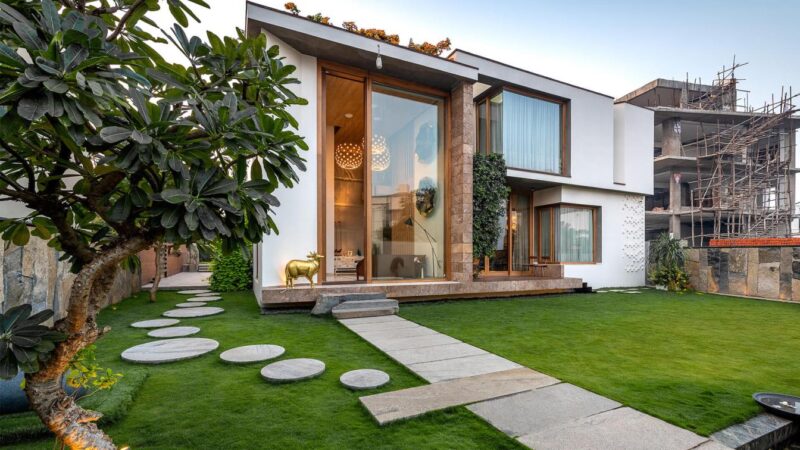In today’s world, more people are becoming conscious of their environmental impact, and this awareness is extending to the rental market. As a property owner or manager, making your rental more eco-friendly not only helps the planet but can also attract more tenants.
With the rise of sustainable living trends, renters are increasingly looking for properties that align with their values. This article explores practical ways to make your rental property more sustainable and eco-friendly, benefiting both your tenants and the environment.
Why Sustainability in Rentals Matters
Sustainability in rental properties isn’t just a passing trend; it’s a necessary shift toward a more responsible way of living. Incorporating sustainable practices into your rental property not only benefits the environment but also attracts eco-conscious tenants. One effective way to enhance your property’s sustainability is by ensuring that your roofing and insulation are up to par. Engaging professionals like Roofers Marietta can help you choose eco-friendly materials that improve energy efficiency and reduce utility costs. Additionally, consider installing energy-efficient windows and doors to minimize heat loss. These upgrades not only contribute to a greener planet but also increase the property’s value and appeal. By making these changes, you create a more sustainable living space that aligns with the growing demand for environmentally responsible housing options.
Furthermore, properties with sustainable features often have lower vacancy rates. Potential renters appreciate the benefits of reduced energy consumption, which translates into lower utility bills. If you’re listing your property online, platforms like zumper rentals can be ideal for showcasing your eco-friendly features to a wider audience.
Energy Efficiency ─ A Key Component of Sustainability

One of the most impactful ways to make your rental more eco-friendly is by improving its energy efficiency. Tenants are increasingly drawn to properties that reduce energy consumption and lower their utility bills. Here are a few ways you can enhance energy efficiency:
Upgrade Insulation and Windows
Proper insulation helps regulate indoor temperatures, reducing the need for heating and cooling. Consider upgrading the insulation in walls, attics, and floors. Additionally, replacing old windows with energy-efficient, double-glazed windows will help prevent heat loss during colder months and reduce the need for air conditioning in the summer.
Install Energy-Efficient Appliances
When it’s time to replace appliances, opt for energy-efficient models with high Energy Star ratings. These appliances consume less electricity and water, which not only saves tenants money but also reduces the overall environmental impact of your property.
Use Programmable Thermostats
Installing programmable thermostats allows tenants to regulate the temperature more efficiently by automatically adjusting heating and cooling based on their schedules. This ensures that energy isn’t wasted when no one is at home.
Sustainable Materials and Practices in Home Renovations

If you’re renovating or upgrading your rental property, consider using sustainable materials and eco-friendly construction practices. These materials are often made from recycled or renewable sources and have a smaller environmental footprint compared to traditional building materials.
Bamboo Flooring
Bamboo is a fast-growing, renewable resource that can be used to create beautiful, durable flooring. Unlike hardwood floors, bamboo is sustainable and doesn’t contribute to deforestation. It’s also resistant to moisture, making it a great choice for areas like bathrooms and kitchens.
Recycled Materials
Using recycled materials for countertops, backsplashes, and cabinetry can be an excellent choice. Recycled glass, metal, and wood are often just as durable and aesthetically appealing as new materials, but they contribute less to environmental degradation.
Low-VOC Paints
Volatile organic compounds (VOCs) are chemicals found in many traditional paints and coatings. These substances can be harmful to both the environment and the people living in the space. Low-VOC or zero-VOC paints are a healthier alternative that produces fewer emissions and is better for the indoor air quality of your rental.
Water Conservation Techniques

Water conservation is another essential aspect of creating an eco-friendly rental. Tenants appreciate properties that help them save on water bills while contributing to sustainability efforts. Implement the following techniques to promote water efficiency:
Low-Flow Fixtures
Install low-flow showerheads, faucets, and toilets to reduce water consumption. These fixtures maintain water pressure while using less water, making them a cost-effective option for both you and your tenants.
Water-Efficient Landscaping
If your property has a garden or yard, choose plants that require minimal water. Native plants are often a great choice because they are adapted to the local climate and need less irrigation. You can also install a drip irrigation system that delivers water directly to the roots, minimizing waste.
Rainwater Harvesting
Rainwater harvesting systems collect rainwater from the roof and store it for later use, such as watering the garden or flushing toilets. This can significantly reduce water bills and decrease the overall environmental impact of the property.
Waste Management and Recycling

Providing tenants with easy access to recycling and waste disposal systems is another way to support sustainability in your rental property. Make sure that recycling bins are readily available and clearly marked. Consider setting up composting stations for organic waste to reduce the amount of trash that ends up in landfills.
Encourage Sustainable Tenant Behavior
Beyond physical upgrades, you can encourage tenants to adopt sustainable habits. Consider implementing policies or providing resources that encourage recycling, reducing energy consumption, and using eco-friendly cleaning products. The more sustainable practices you encourage, the greater the positive impact on the environment.
Market Your Eco-Friendly Rental
Once you’ve made the changes to improve the sustainability of your property, it’s time to market it effectively. Highlight these features when listing your property on rental platforms like zumper rentals. Make sure potential tenants know about the energy-efficient appliances, water-saving fixtures, and eco-friendly materials you’ve used. This will help attract renters who value sustainability and are willing to pay a premium for an environmentally friendly living space.
Conclusion
Making your rental property more sustainable is an investment that can benefit both you and the planet. From energy-efficient upgrades to water-saving techniques, there are numerous ways to reduce your property’s environmental footprint while saving money in the long run.
With increasing demand for eco-friendly living, sustainable rentals are not only good for the environment but also a great way to attract responsible, conscientious tenants. By making the right choices today, you’ll be setting your property up for long-term success in the growing green rental market.


